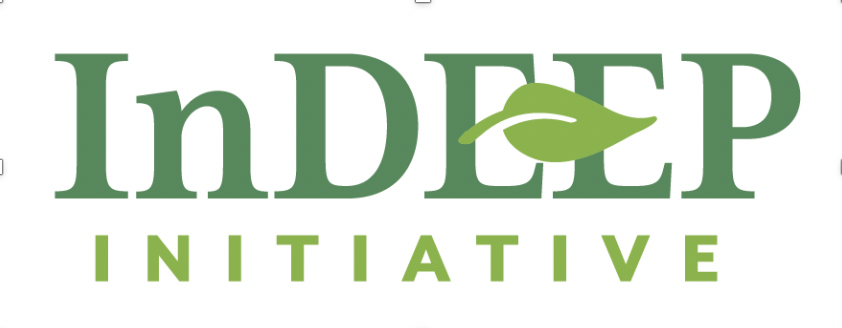Closing the Gap: SustainUS Makes Youth Voices Heard in the Fight for Climate Resilience
“Climate is inherently an interdisciplinary field,” said Orion Camero, executive director of SustainUS. Snow melting in the Arctic, mountaintop removal coal mining in Virginia, flooding in the Mississippi Delta region – these are just a few of the many climate-related and environmental issues SustainUS addresses at meetings of the United Nations and the World Bank, among other international groups.
The premise behind SustainUS is simple: bring American youth to international gatherings to advocate for climate resilience and environmental justice. The impact is exponential: Youth delegates raise awareness of these issues and go on to become active leaders in many arenas. SustainUS youth have a “fierce determination for climate justice and collective liberation,” Camero said.
The origins and evolution of SustainUS: What other youth are not here?
SustainUS was founded in 2001 by six young people who noticed a need for U.S. youth representation to advocate for justice and sustainability in powerful international spaces. Twenty years later, SustainUS is a “small but mighty organization,” Camero said. With a paid part-time staff of five and a volunteer base of 10 to 20 active members who execute programmatic work, the organization has helped develop the skills of more than 1,000 youth leaders.
SustainUS has evolved over the course of those 20 years. At a key moment in the organization’s journey, staff and volunteers asked, “What other youth are not here?” This led the organization through a process of building more equitable and visible practices for a greater range of youth to become delegates.
It has been particularly important to SustainUS to include youth who are “most impacted by the climate crisis in many different ways,” Camero said. The communities these youth represent “all have been impacted by the climate crisis in one direct way or another,” they said. And SustainUS has found that a wide representation of youth is essential to expose the root cause of social inequities. “These social inequities that show up in the environmental field are also the same modes of thinking or ways of being that impact social inequities at large,” Camero said.
Youth delegates come from frontline or local organizations across the country. Together, said Camero, these youth create “a tapestry of folks who are doing work on the local level and who come to represent the United States in this global space.”
Providing a platform for youth voices
The mission of SustainUS, said Camero, is to “provide a platform for youth voices to express themselves and be heard in the broader media sphere.” To do this, the organization has three core goals: increase youth visibility, representation, and advocacy in international decision-making spaces; make youth voices heard in the media sphere; and develop their coalition-building skills.
To make youth more visible, SustainUS sends delegations of 10 to 12 youth leaders to major cross-sectoral gatherings where international agreements are being developed about how to address climate change. The goal is to make sure youth from impacted communities have a seat at those tables.
To amplify youth voices beyond the international gatherings they attend, SustainUS provides media training. “We train youth to be able to pitch op-eds to have their voices heard and land on different media outlets,” Camero asid. Coverage of SustainUS has appeared in the New York Times, Reuters, and Teen Vogue, among other outlets. “Oftentimes that content inside of those articles helps to push forward dialogue or continued advocacy toward very specific issues,” Camero said. Added to this is the in-house video content SustainUS creates to further the dialogue on climate change.
To ensure that this work goes on after youth age out of the program, SustainUS helps youth delegates develop movement-building skills. Camero said, “Our delegates have the experience of setting up coalition-building meetings, collaboratively putting on actions, helping decide on messaging for these actions, translating them through so that these spaces can be visible not only to the general public but also to have our demands heard from the entities that are sharing space in these different gatherings.”
An eye on the long game
Ultimately, SustainUS has its eye on the long game in the fight for climate resilience and environmental justice. Youth delegates have gone on to a variety of leadership positions, including serving in the legislative field. SustainUS alumni helped found the Sunrise Movement, and alumna Amanda Gorman went on to become the youngest poet to deliver an inaugural poem at President Joe Biden’s inauguration.
“We are a connector type of organization,” Camero said, “and we celebrate our youth leaders once they have gone through these delegations.” Program alumni “end up in these movement leadership spaces and positions by virtue of the experience they have had in SustainUS.” Camero said alumni have been “able to test out what it looks like to collaborate with other youth in these really high-pressure political spaces where deep lifelong bonds are formed in the process of navigating and dealing with these issues together.”
What’s next for SustainUS? Camero said that the organization will continue to “think about community resilience, sustained networks of relationships that have people collaborating cross-sectorally to move the dial on environmental justice and climate justice.”
A note on the Closing the Gap series: Black, Indigenous, and People of Color (BIPOC)-majority communities experience climate change and its harmful effects to a greater degree than other communities in the United States. The knowledge of this disproportionate impact of climate change is the basis of the modern environmental justice movement. What is not as readily evident or celebrated is how effectively BIPOC communities and organizations within these communities address climate change. This series of organizational profiles – known as “Closing the Gap” – highlights environmental organizations from across the country led by and/or serving BIPOC communities. The series is an extension of the Closing the Gap initiative, part of Inclusion, Diversity, and Equity in Environmental Philanthropy (InDEEP).

